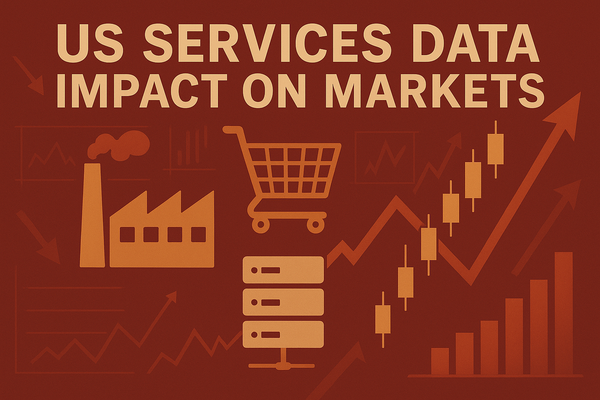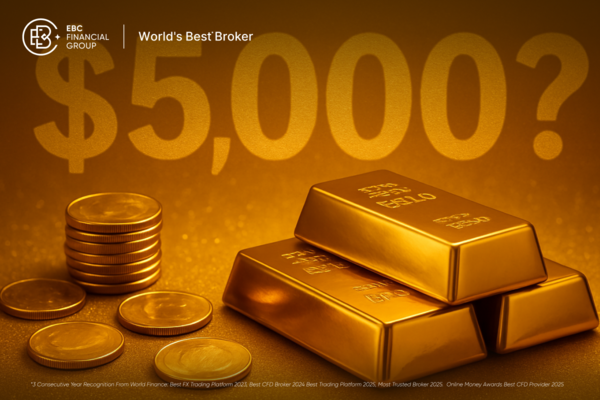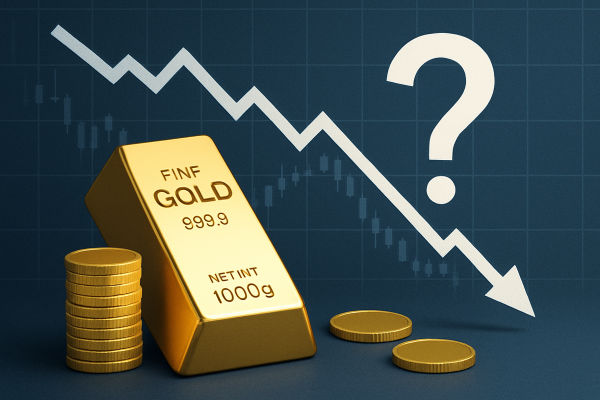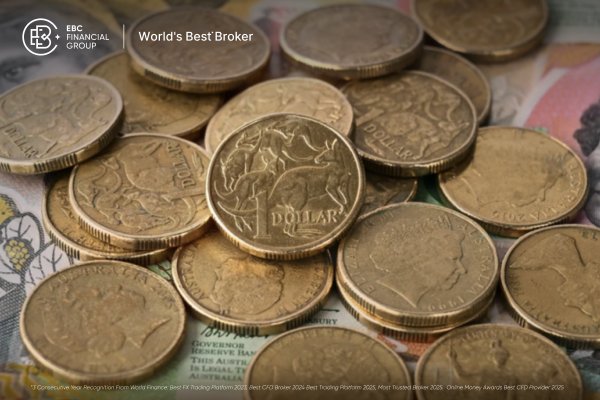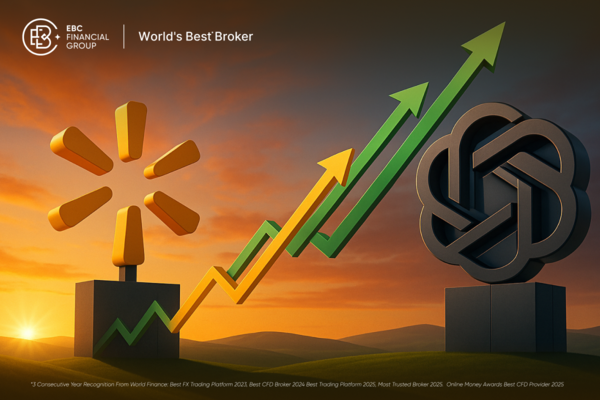Gold has long captivated traders and investors alike. From ancient coins to modern ETFs, it has represented not just wealth but security. The question "Is buying gold a good investment?" is as old as the asset itself, yet its answer changes with the evolving landscape of global markets.
Today, in a world rife with inflation, rate hikes, geopolitical tension, and currency debasement, the conversation around gold is as pressing as ever. But the lens through which one evaluates gold matters. For long-term investors, gold might serve as a hedge or a diversification tool. For traders, however, gold is a dynamic asset that presents opportunities for short- and medium-term speculation—offering liquidity, volatility, and strong technical behaviour.
Market Drivers Behind Gold Prices
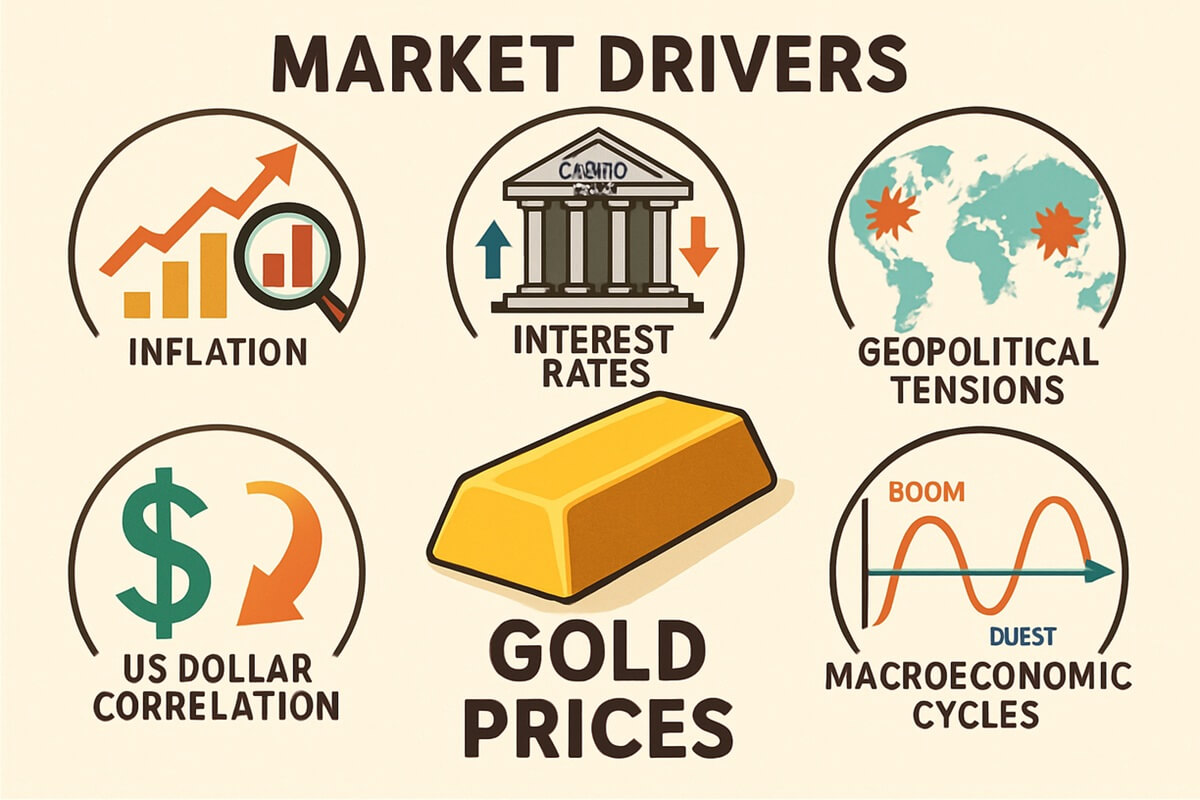 Gold doesn't operate in a vacuum. Its price is influenced by a web of macroeconomic variables that traders must stay attuned to:
Gold doesn't operate in a vacuum. Its price is influenced by a web of macroeconomic variables that traders must stay attuned to:
Inflation and Interest Rates
Gold is traditionally seen as an inflation hedge, meaning it tends to preserve purchasing power when fiat currencies weaken. However, the relationship between inflation and gold isn't always linear. Gold reacts more acutely to real interest rates (nominal rates minus inflation). When real yields turn negative, gold becomes more attractive as it carries no yield penalty.
Central Bank Policies and Geopolitical Tensions
Actions by the Federal Reserve, the European Central Bank, and other monetary authorities have a significant bearing on gold. Quantitative easing, dovish guidance, or unexpected rate pauses can all lift the metal. Similarly, geopolitical events—wars, trade disputes, and diplomatic stand-offs—tend to increase gold's demand as a "safe-haven" asset.
US Dollar Correlation
Gold is priced in USD globally. A strong dollar usually suppresses gold prices, while a weakening dollar tends to boost it. Traders often monitor the DXY Index (Dollar Index) to anticipate inverse moves in gold.
Macroeconomic Cycles
During economic uncertainty or recessionary signals, gold often benefits from capital rotation. On the other hand, in a booming risk-on environment, capital may flow away from gold and into equities, crypto, or other growth assets.
Pros and Cons of Buying Gold Today
As with any asset, buying gold comes with advantages and limitations that should be weighed carefully—especially from a trading perspective.
Pros and Cons of Buying Gold Today
| Factor |
Pro |
Con |
| Store of Value |
Retains purchasing power over time; resistant to inflation |
Does not generate income (unlike stocks or bonds) |
| Liquidity |
Highly liquid via ETFs, futures, and physical markets |
Bid-ask spreads and fees vary by instrument |
| Portfolio Hedge |
Inverse correlation to equities during crises |
Hedge effectiveness can diminish in rate-hike cycles |
| Volatility Profile |
Tradable short-term price swings during uncertainty |
Can move sideways for long stretches without trend |
| Global Demand |
Central bank purchases and jewellery demand provide long-term support |
Vulnerable to selling pressure in a strong dollar environment |
| Tangible Asset |
Physical ownership offers security against systemic risk |
Storage and insurance costs for physical gold |
Alternatives
Some traders compare gold to Bitcoin, labelling it "digital gold." Others use TIPS (Treasury Inflation-Protected Securities) or real estate for inflation protection. While none replicate gold exactly, understanding these alternatives helps clarify its role.
How Traders Approach Gold Differently from Investors
Whereas investors may hold gold for years, traders seek to capitalise on short-term moves. This requires a different mindset and toolkit.
Technical Setups
Gold respects technical levels exceptionally well. Patterns such as flags, triangles, and double tops/bottoms are commonly observed and traded. Moving averages, RSI, and MACD are staples for gold chartists.
Volatility and Volume
Gold often experiences volatility clustering—periods of calm followed by violent moves. Traders monitor indicators like ATR (Average True Range) or Bollinger Bands to size positions appropriately.
Timeframes
Intraday traders (scalpers) often focus on gold's reaction to economic news (e.g., Non-Farm Payrolls, CPI, FOMC). Swing traders might position over days or weeks around broader macro themes.
Sentiment Indicators
Tools such as the Commitment of Traders (COT) report, fear/greed indices, and options put-call ratios help gauge sentiment. Extreme positioning can indicate reversals or continuation signals.
Popular Vehicles for Gaining Exposure to Gold
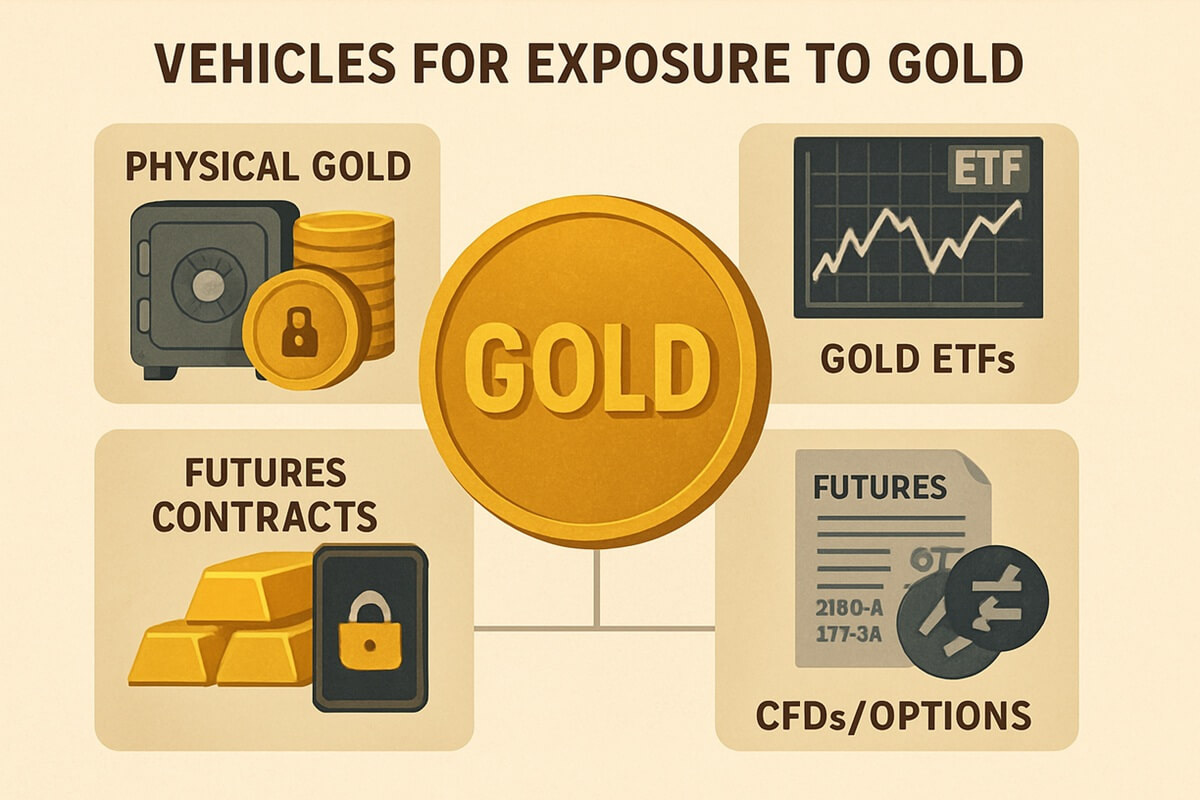 How one trades gold is just as important as when. Various instruments allow exposure with different risk-return profiles.
How one trades gold is just as important as when. Various instruments allow exposure with different risk-return profiles.
Physical Gold
Forms: Coins, bars, and bullion
Considerations: Storage, insurance, and lack of liquidity
Use Case: Long-term hedge against systemic collapse—not suitable for active trading
Gold ETFs
Popular Examples: SPDR Gold Shares (GLD), iShares Gold Trust (IAU)
Pros: Liquid, tradable like stocks, lower fees than physical gold
Cons: Tracking error, doesn't deliver physical gold
Futures Contracts
Platforms: CME (GC contract), ICE
Pros: High leverage, low spreads, deep liquidity
Cons: Margin calls, expiry dates, and greater risk exposure
CFDs and Options
CFDs: Available via brokers like IG or Saxo Bank
Options: Allow hedging, speculation, and income strategies
Risks: Leverage magnifies both gains and losses
For most traders, gold futures or CFDs strike the best balance between flexibility, leverage, and liquidity.
Should You Buy Gold Now? A Trader's Tactical Checklist
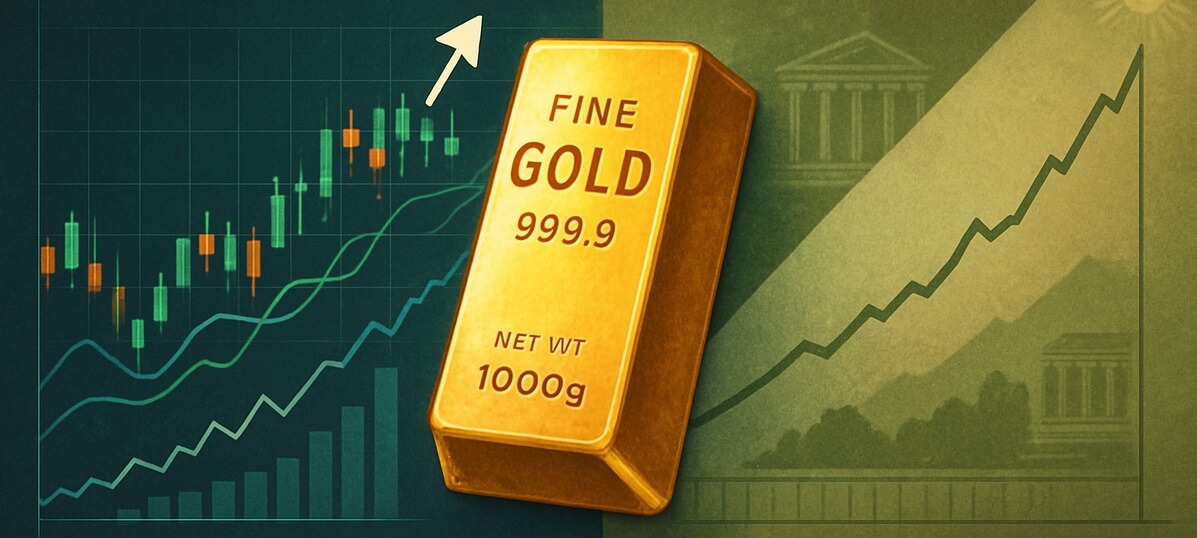
Whether or not gold is a "good investment" depends on your strategy and context. Traders must constantly evaluate the setup using a disciplined framework:
Tactical Buy Signals
Falling real interest rates
Rising geopolitical tension
Breakout above key resistance with volume confirmation
Oversold technical indicators with bullish divergence
Tactical Avoid/Short Signals
Hawkish Fed rhetoric or surprise rate hikes
Dollar strength breakout
Breakdown below multi-month support
Bearish technical patterns with heavy sell volume
Practical Risk Management
Use volatility-adjusted stops (e.g., ATR-based)
Size positions based on fixed % risk per trade
Avoid trading gold during high-impact macro news unless you are positioned beforehand or react instantly
Diversify across related instruments (e.g., gold and silver) to hedge thematic exposure
Final Thoughts: Tactical or Timeless?
So, is buying gold a good investment?
If you're a trader, the answer isn't binary. Gold is a valuable instrument—not because it always goes up, but because it behaves in a predictable and tradeable manner. It's liquid, reactive, and rich in technical structure, making it a prime asset for those who know how to manage its unique rhythm.
Rather than treating gold as a passive store of value, today's savvy trader uses it as a strategic weapon—whether as a volatility play, a hedge, or a momentum vehicle.
Timing is everything. And with gold, timing is often technical.
Disclaimer: This material is for general information purposes only and is not intended as (and should not be considered to be) financial, investment or other advice on which reliance should be placed. No opinion given in the material constitutes a recommendation by EBC or the author that any particular investment, security, transaction or investment strategy is suitable for any specific person.










